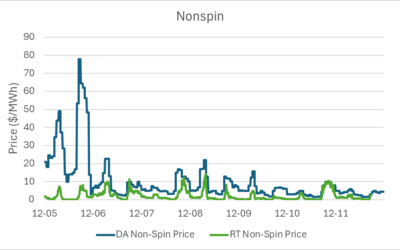Tesla’s partner SolarCity circulated this image of a home complete with solar panels and Tesla Powerwall last night. Image: SolarCity.
Tesla’s Powerwall home energy storage system will join the US market at a “remarkably low price”, according to one analyst PV Tech has spoken to following the announcement from the Silicon Valley firm last night.
Additionally, PV Tech’s sister publication, the UK site Solar Power Portal, spoke to a Tesla marketing representative in England this morning, who confirmed that the initial markets targeted by the storage products would be the US, Australia and Germany. The company apparently hopes to roll out storage systems in the UK “by the end of this year”.
Many commentators had expected that Tesla would offer the systems at a competitive price, with some putting numbers on it and others declining to do so ahead of the event. The home storage range, which was announced along with commercial, off-grid or micro-grid and utility-scale battery systems, will be initially priced at US$3,000 for a 7kWh system or US$3,500 for a 10kWh model.
“I think we were all expecting a low price to be announced. It [now] has been and it is a remarkably low price,” Bloomberg New Energy Finance’s Logan Goldie-Scot said this morning.
Try Premium for just $1
- Full premium access for the first month at only $1
- Converts to an annual rate after 30 days unless cancelled
- Cancel anytime during the trial period
Premium Benefits
- Expert industry analysis and interviews
- Digital access to PV Tech Power journal
- Exclusive event discounts
Or get the full Premium subscription right away
Or continue reading this article for free
Goldie-Scot took PV Tech Storage through some simple cost comparisons. He said that the pricing was more in line with EV batteries, rather than stationary storage devices, which typically have a much higher cost associated with them.
“Basically, if we look at what we understand Panasonic 18650 battery packs for EVs to be costing at the moment, we’re quite confident about it, we believe that they’re actually costing about US$300 per kWh for an EV battery pack.
“So there’s typically been a pretty significant multiplier between an EV battery pack and a residential energy storage system to the point that we are, in the US we’ve been seeing systems for US$1500 per kWh-plus.”
Tesla’s Powerwall home battery pack. Image: Tesla.
Effectively costing US$350 per kWh based on Tesla’s quoted price range, the stationary storage systems will cost “an order of magnitude” less than comparable products in some of the regional markets the EV maker is targeting.
“In Australia, you’re looking at AUS$3,000 (US$2,400) per kWh, in Europe you see a range averaging out at €2,000 (US$2,264) per kWh,” Goldie-Scot said.
“So there is this order of magnitude difference between those prices and what Tesla’s offering because if Tesla’s coming in with US$3,500 for a 10kWh system, that’s significantly lower than any of the competitors currently out there.”
However, Goldie-Scot offered the caveat that prices given by Tesla do not include the system’s inverter, which he said makes up a “significant portion” of the cost of a home energy storage system. Nevertheless, “this is still likely to be the lowest price on the market even once you include the inverter”, he added.
Other analysis firms including GTM and Lux have also offered their quick reactions to Tesla’s much-vaunted stationary storage product launch to the industry.
Lux Research played up the importance of the cost contribution from the inverter, other power electronics, software and other related non-battery components of the system.
“Cheap cells made in the Gigafactory are only part of the puzzle. Unlike electric vehicles, in stationary batteries there is more of a relative cost contribution coming from power electronics, software, and installation,” Lux energy storage analyst Dean Frankel said.
Some of the partnerships already made public by Tesla on the storage products, such as its relationship with Panasonic and SolarCity would enable a certain degree of scale, according to Frankel, but the analyst said Tesla would do well to find more.
“Without more vertical integration – and perhaps even some acquisitions and Gigafactory-like efforts dedicated to inverters – Tesla is limiting its growth potential here.”
Frankel estimated that the inverter, installation and other costs not factored into the price ranges that were announced by Tesla CEO Elon Musk last night, could as much as double the US$3,000 initial cost of a system.
But Tesla’s success in pushing down battery prices “will accelerate this market”, Frankel said.
“…power electronics, installation, and widespread availability of financing remain open questions. The quicker Tesla can build partnerships, make acquisitions, and invest further to address these issues, the better its chance of hitting its hugely ambitious goal of selling 15GWh of stationary energy storage in 2020.”
Meanwhile, GTM Research energy storage analyst Ravi Manghani said Tesla’s Powerwall prices were likely to “result in similarly aggressive price offers by other storage technology and system vendors”.
However, Manghani felt the prices were only “slightly lower” than what would be expected of an “expensive electric vehicle manufacturer”. Furthermore, according to Manghani, while the lowered pricing would deliver a “minor jolt” to the industry, what he was seeing from the global energy storage market was that even without this “Tesla bump”, the economics for energy storage are heading in a very favourable direction regardless.
While partnerships already in place with SolarCity and Panasonic will greatly assist Tesla in reaching scale at low cost, there are still aspects that could be improved further, according to Dean Frankel of Lux Research. Image: Tesla.
As expected, the company is also bringing out a utility-scale storage offering, scalable in 100kWh blocks from 500kWh up to 10MWH-plus. These will offer renewable energy ‘firming’ to mitigate variable generation from sources like solar and wind, dispatching excess stored capacity as required. In addition they will be usable for grid services, from ramp control, buffering the powering up or down of a large generation source’s output, effectively smoothing output to match supply and demand balance.
In much of the US, grid-balancing has already been a driver of large-scale storage deployment, with some utilities already procuring energy storage to stave off the need to invest in expensive grid infrastructure upgrades and extensions. As with the DemandLogic commercial storage product offered by SolarCity/Tesla, the utility-scale batteries can manage peak demand.
Finally, Tesla’s longstanding partnership with SolarCity may yield more offer than just scaled deployment of the systems through SolarCity’s customer and installer base. SolarCity made its own announcement of the tie-in on Powerwall last night and unlike Tesla gave some indication of the potential business use cases the two companies will be aiming to enable to open up new revenue streams and maximise the usefulness of the batteries.
SolarCity and other storage players, both in and out of the PV industry, are looking at the prospects for aggregating the capabilities of a large number of connected customer-sited devices. While still not enabled by the market design of most major territories around the world, connecting smaller systems together to make one large ‘fleet’ of systems could offer an opportunity to join the electricity retail business at a meaningful scale, while also allowing the systems to provide grid balancing services of the type more commonly seen provided by fossil fuel plants, or more recently, utility-scale storage systems.
US start-up, Stem, is already trialling some business models for aggregated fleets albeit for commercial customers as opposed to households, while German energy storage maker SonnenBatterie is trialling two separate models for aggregation, one for Germany’s frequency regulation market, the other to aggregate ‘virtual power plants’ from connected systems in order to join the retail electricity sales market.
While acknowledging this idea has potential, Goldie-Scot of BNEF said it was very much an idea in the earlier stages of its development.
“There are a number of residential storage suppliers who are looking at additional opportunities by aggregating systems. This isn’t just SolarCity who are thinking about this but it’s very much something that really most of the players will be exploring [as an] opportunity in some way or another.
“We don’t believe it’s likely to be an immediate use case for these systems because you currently don’t have the required volume to aggregate enough systems up. As you have greater deployment, the opportunities for aggregation will increase, but it’s still not a proven use case.”
According to one energy consultant Chris Edgette of Stratagem Consulting, who is also a director of the California Energy Storage Alliance (CESA), however, market conditions for aggregated systems could be in place in the state by the end of this year.
With additional reporting by Peter Bennett.





